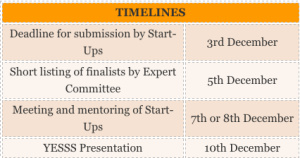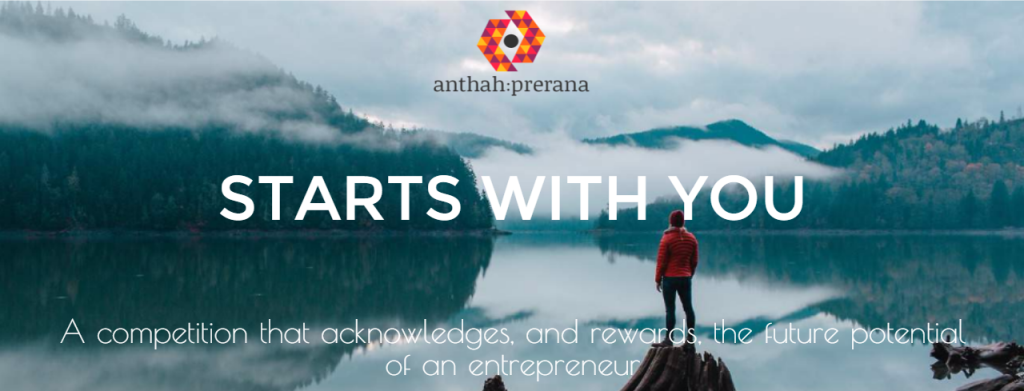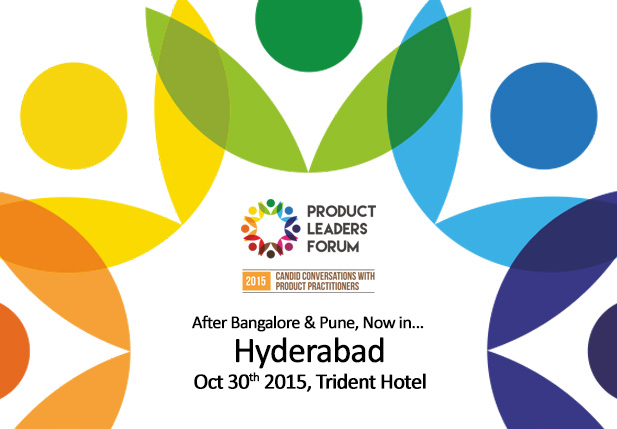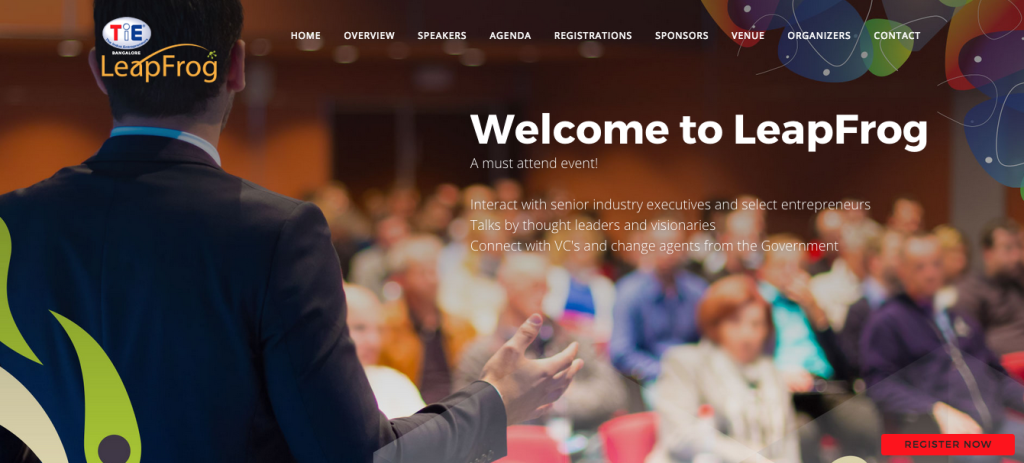What we see in theMaker addiction, is that a relatively small amount of people can have a big impact. You don’t necessarily need the world’s largest company behind you. – Dale Dougherty- Founder, Make Magazine
4 years ago, I walked out of the elevator onto the 4th floor of NYU’s TISCH building, home to the Interactive Telecommunications program that brought together some of the most diverse bunch of brilliant misfits from around the world to learn, teach, collaborate and make. The arriving Masters candidates, were an eclectic bunch, which included engineers, designers, lawyers, journalists, artists, architects, a masseur, filmmakers, dancers, fashion buyer, and a former drag queen. I was an actress and TV host, who didn’t know a soldering iron from a glue gun, and who, like many in my incoming class, had never written a line of code in her life. Yet, only a month later, I would strip down an old computer for spare parts to make my own galvanic skin resistor from scratch, and program video outputs to visualize the incoming data. My first wearable prototype –the mood gauge, had involved experimenting with different materials, soldering, electronics, programming, designing, user experience and video, all of which I’d known nothing of when I stepped off the elevator that first day of school. When my first device ‘talked’, I was hooked. The Maker addiction had begun.
 The maker era, enabled by the Internet, DIY 3D printing, low cost chips/boards, open-source prototyping platforms like the Arduino, shifting business models and payment options have erased barriers to creation and expression and leveled the playing field. Today, if you want to express an idea, you can choose whether you want to employ sensors or film, an android app, performance or interactive sculpture. The Maker movement is sometimes perceived to be synonymous with geek culture, robotics and gadgets. And there is truth to this. Engineers, with their deep knowledge and a love of taking things apart are no doubt the movement’s most ardent mascots. However, making is more than just about the technology. It is about a cross pollination of ideas, the merging of the boundaries between disciplines and philosophies. At it’s core, the maker ideology is about moving from being a mere consumer to participating, influencing and changing the world you interact with- be it objects, people or experiences. It is also about pushing boundaries and experimenting for the sheer fun of it. And to achieve this, we need a variety of backgrounds and perspectives all playing with each other. Making/tinkering encompasses a dazzling variety of creations- including DIY quadcopters controlled by brainwaves, cloned fig trees, bamboo bicycles, environment-reactive clothing, 3D bio-printed organs. It touches every area of our lives and encompasses many different fields- arts and crafts, engineering, urban planning, architecture, theatre, film, storytelling, psychology, education, gastronomy, relationships, health & medicine.
The maker era, enabled by the Internet, DIY 3D printing, low cost chips/boards, open-source prototyping platforms like the Arduino, shifting business models and payment options have erased barriers to creation and expression and leveled the playing field. Today, if you want to express an idea, you can choose whether you want to employ sensors or film, an android app, performance or interactive sculpture. The Maker movement is sometimes perceived to be synonymous with geek culture, robotics and gadgets. And there is truth to this. Engineers, with their deep knowledge and a love of taking things apart are no doubt the movement’s most ardent mascots. However, making is more than just about the technology. It is about a cross pollination of ideas, the merging of the boundaries between disciplines and philosophies. At it’s core, the maker ideology is about moving from being a mere consumer to participating, influencing and changing the world you interact with- be it objects, people or experiences. It is also about pushing boundaries and experimenting for the sheer fun of it. And to achieve this, we need a variety of backgrounds and perspectives all playing with each other. Making/tinkering encompasses a dazzling variety of creations- including DIY quadcopters controlled by brainwaves, cloned fig trees, bamboo bicycles, environment-reactive clothing, 3D bio-printed organs. It touches every area of our lives and encompasses many different fields- arts and crafts, engineering, urban planning, architecture, theatre, film, storytelling, psychology, education, gastronomy, relationships, health & medicine.
“Technology is a means to an end; the end is people” – Red Burns, Founder, ITP, NYU
The industrial revolution concentrated the means and power of production in the hands of a few. Even the entertainment and news industry was a one-way street, with a clear delineation between producers and consumers. There was no way of “talking back” or dissenting on a scale that had any sort of impact. The internet and the subsequent democratization of tools and access changed that. Today, a lone individual with a You Tube channel can command more viewers than a major news channel. As an example, PewDiePie’s, a Swedish gamer’s You Tube channel has 32 million subscribers and more than 2 billion views. All he needed for that was a video camera and a subject he was passionate about. The rise of cheap 3D printers means many more people can create physical objects designed by them quickly and cheaply. The most exciting aspect about the maker culture is that it endows the maker with personal power. Where once, we grumbled about the lack of government initiative in solving certain problems, today, we have the means of creating our own solutions.
 This is where makerspaces and Maker Faire comes in. Around the world, maker culture has emerged, founded on the ideas of collaboration and learning to learn. Innovation is a happy byproduct of this culture. From the Bay Area to Bogota, Istanbul to Nairobi, maker cultures are blossoming, driven by a spirit of collaboration and learning to learn. In India, Bangalore, Mumbai, Delhi, Ahmedabad and Kolkata have their own makerspaces, driven by a global sensibility, but also grounded in locally relevant approaches. One of these spaces, Bangalore’s Workbench Projects, operating out of an inspiring space in the Halasuru metro station, has been at the forefront of some exciting maker initiatives, one of which is the Bengaluru Mini Maker Faire, which it is hosting in collaboration with Nasscom.
This is where makerspaces and Maker Faire comes in. Around the world, maker culture has emerged, founded on the ideas of collaboration and learning to learn. Innovation is a happy byproduct of this culture. From the Bay Area to Bogota, Istanbul to Nairobi, maker cultures are blossoming, driven by a spirit of collaboration and learning to learn. In India, Bangalore, Mumbai, Delhi, Ahmedabad and Kolkata have their own makerspaces, driven by a global sensibility, but also grounded in locally relevant approaches. One of these spaces, Bangalore’s Workbench Projects, operating out of an inspiring space in the Halasuru metro station, has been at the forefront of some exciting maker initiatives, one of which is the Bengaluru Mini Maker Faire, which it is hosting in collaboration with Nasscom.
Maker Faire describes itself as “the greatest show and tell on earth”. People from all walks of life come to show what they’ve made and to learn from each other. The open, playful nature of these events are deeply conducive to cross-collaborative projects and innovation.
“The Walls between art and engineering exist only in our minds” – Theo Jansen, Dutch artist, creator of kinetic sculptures.
“Maker Faire is primarily designed to be forward-looking, showcasing makers who are exploring new forms and new technologies. But it’s not just for the novel in technical fields; Maker Faire features innovation and experimentation across the spectrum of science, engineering, art, performance and craft” – Maker Faire website
The First Maker Faire was held in 2006 at San Mateo and attracted 20,000 people. Today, Maker Faires are held all over the world, with 151 events taking place in 2015 alone. Aware of the global shifts towards a maker driven economy, and eager to maintain their innovative edge, bigger corporations are now increasingly part of the Maker Faires. Companies like General Electric, Autodesk sponsor and, as in the case of Motorola, even collaborate with hardware startups like Makerbot.
The Bangalore Mini Maker Faire aims to be a community based learning event celebrating the Indian maker culture, with it’s unique perspectives, aesthetics and challenges. Be it robotics, games, gastronomical innovation, sustainability, textiles, apps or video, the Mini Maker Faire is a chance to climb aboard the Indian maker bandwagon and be a part of a global movement, one that Kevin Kelley has dubbed the “Third Industrial Revolution”.
 If previous industrial movements were about creating silos and competition, the maker movement emphasizes and engenders collaboration. A fashion designer collaborates with an engineer to create a responsive dress, a homemaker and a 12 year old biology enthusiast work on bio-fabrication projects, the local police team up with security specialists, designers and android developers to create apps and devices for a safer city. The possibilities are endless.
If previous industrial movements were about creating silos and competition, the maker movement emphasizes and engenders collaboration. A fashion designer collaborates with an engineer to create a responsive dress, a homemaker and a 12 year old biology enthusiast work on bio-fabrication projects, the local police team up with security specialists, designers and android developers to create apps and devices for a safer city. The possibilities are endless.
If you’re a maker or think you might like to try your hand at being one, apply to participate before the 15th of September by sending an email to info(at)workbenchpojects.com
If you would like to support the maker community as a volunteer, sponsor (be it individual/ organization) feel free to email to info(at)workbenchprojects.com.
The Bengaluru Mini Maker Faire will take place on the 15th of October 2015 at the Taj Vivanta, Yeshwantpur.
Guest Post by Suvarchala Narayanan






 I have read about startup founders who don’t (or stopped) attend events – justifiably so. In ecosystems where there is now an entire industry of events springing up (i.e. it feels to me that some people’s startup in itself is all about organizing events), it becomes very difficult to separate the wheat from the shaft. Overall, value gets diluted in a bid to make profit. SaaSx2 is in its own class by all standards, hey, not because profit wasn’t the motive, but purely because of the value delivered. I couldn’t have asked for more.
I have read about startup founders who don’t (or stopped) attend events – justifiably so. In ecosystems where there is now an entire industry of events springing up (i.e. it feels to me that some people’s startup in itself is all about organizing events), it becomes very difficult to separate the wheat from the shaft. Overall, value gets diluted in a bid to make profit. SaaSx2 is in its own class by all standards, hey, not because profit wasn’t the motive, but purely because of the value delivered. I couldn’t have asked for more.




 The UX Clinic is a platform that helps you get the opportunity to get the ‘user experience’ strategy right, the first time itself. With their expert design panel comprising of highly skilled domain experts and industry leading designers: they are experienced to help startups create desirable, usable, and scalable products.
The UX Clinic is a platform that helps you get the opportunity to get the ‘user experience’ strategy right, the first time itself. With their expert design panel comprising of highly skilled domain experts and industry leading designers: they are experienced to help startups create desirable, usable, and scalable products. The maker era, enabled by the Internet, DIY 3D printing, low cost chips/boards, open-source prototyping platforms like the Arduino, shifting business models and payment options have erased barriers to creation and expression and leveled the playing field. Today, if you want to express an idea, you can choose whether you want to employ sensors or film, an android app, performance or interactive sculpture. The Maker movement is sometimes perceived to be synonymous with geek culture, robotics and gadgets. And there is truth to this. Engineers, with their deep knowledge and a love of taking things apart are no doubt the movement’s most ardent mascots. However, making is more than just about the technology. It is about a cross pollination of ideas, the merging of the boundaries between disciplines and philosophies. At it’s core, the maker ideology is about moving from being a mere consumer to participating, influencing and changing the world you interact with- be it objects, people or experiences. It is also about pushing boundaries and experimenting for the sheer fun of it. And to achieve this, we need a variety of backgrounds and perspectives all playing with each other. Making/tinkering encompasses a dazzling variety of creations- including DIY quadcopters controlled by brainwaves, cloned fig trees, bamboo bicycles, environment-reactive clothing, 3D bio-printed organs. It touches every area of our lives and encompasses many different fields- arts and crafts, engineering, urban planning, architecture, theatre, film, storytelling, psychology, education, gastronomy, relationships, health & medicine.
The maker era, enabled by the Internet, DIY 3D printing, low cost chips/boards, open-source prototyping platforms like the Arduino, shifting business models and payment options have erased barriers to creation and expression and leveled the playing field. Today, if you want to express an idea, you can choose whether you want to employ sensors or film, an android app, performance or interactive sculpture. The Maker movement is sometimes perceived to be synonymous with geek culture, robotics and gadgets. And there is truth to this. Engineers, with their deep knowledge and a love of taking things apart are no doubt the movement’s most ardent mascots. However, making is more than just about the technology. It is about a cross pollination of ideas, the merging of the boundaries between disciplines and philosophies. At it’s core, the maker ideology is about moving from being a mere consumer to participating, influencing and changing the world you interact with- be it objects, people or experiences. It is also about pushing boundaries and experimenting for the sheer fun of it. And to achieve this, we need a variety of backgrounds and perspectives all playing with each other. Making/tinkering encompasses a dazzling variety of creations- including DIY quadcopters controlled by brainwaves, cloned fig trees, bamboo bicycles, environment-reactive clothing, 3D bio-printed organs. It touches every area of our lives and encompasses many different fields- arts and crafts, engineering, urban planning, architecture, theatre, film, storytelling, psychology, education, gastronomy, relationships, health & medicine. This is where makerspaces and Maker Faire comes in. Around the world, maker culture has emerged, founded on the ideas of collaboration and learning to learn. Innovation is a happy byproduct of this culture. From the Bay Area to Bogota, Istanbul to Nairobi, maker cultures are blossoming, driven by a spirit of collaboration and learning to learn. In India, Bangalore, Mumbai, Delhi, Ahmedabad and Kolkata have their own makerspaces, driven by a global sensibility, but also grounded in locally relevant approaches. One of these spaces, Bangalore’s
This is where makerspaces and Maker Faire comes in. Around the world, maker culture has emerged, founded on the ideas of collaboration and learning to learn. Innovation is a happy byproduct of this culture. From the Bay Area to Bogota, Istanbul to Nairobi, maker cultures are blossoming, driven by a spirit of collaboration and learning to learn. In India, Bangalore, Mumbai, Delhi, Ahmedabad and Kolkata have their own makerspaces, driven by a global sensibility, but also grounded in locally relevant approaches. One of these spaces, Bangalore’s  If previous industrial movements were about creating silos and competition, the maker movement emphasizes and engenders collaboration. A fashion designer collaborates with an engineer to create a responsive dress, a homemaker and a 12 year old biology enthusiast work on bio-fabrication projects, the local police team up with security specialists, designers and android developers to create apps and devices for a safer city. The possibilities are endless.
If previous industrial movements were about creating silos and competition, the maker movement emphasizes and engenders collaboration. A fashion designer collaborates with an engineer to create a responsive dress, a homemaker and a 12 year old biology enthusiast work on bio-fabrication projects, the local police team up with security specialists, designers and android developers to create apps and devices for a safer city. The possibilities are endless.


 This step is to ensure that you can know exactly what are the top 3 features you need to implement first which will make your product “must have” to solve the problem for your users.
This step is to ensure that you can know exactly what are the top 3 features you need to implement first which will make your product “must have” to solve the problem for your users. Typically in your first pass stick to under 7 screens would be my suggestion. That’s enough for a 45 second to 1 min “demo” and should give your users a feel for what the app will do. If they ask you for “one” feature that matters more to them than the ones you have, dont mock it up yet, but put it on your list until you have enough users interested.
Typically in your first pass stick to under 7 screens would be my suggestion. That’s enough for a 45 second to 1 min “demo” and should give your users a feel for what the app will do. If they ask you for “one” feature that matters more to them than the ones you have, dont mock it up yet, but put it on your list until you have enough users interested.